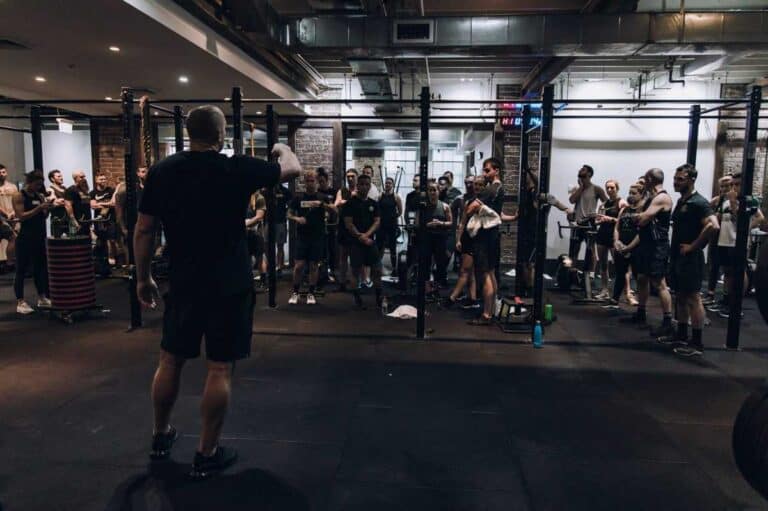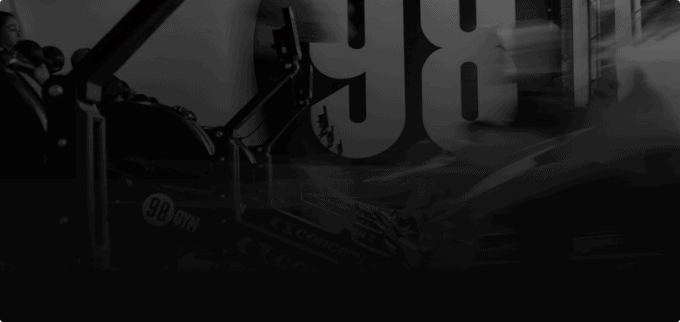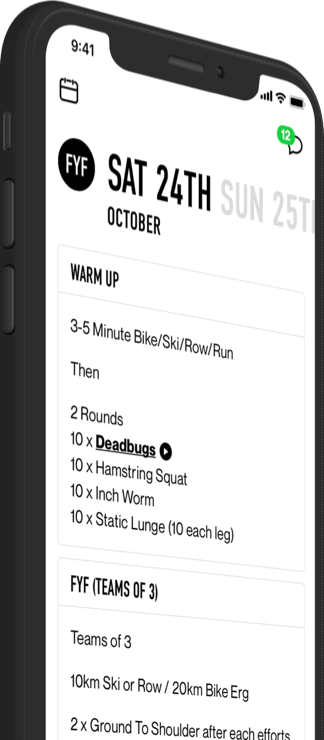Nineteen years ago, I entered the back door of a local bar/eatery at 1 AM on a Friday morning (the players called it Thursday night). I was performing a curfew and welfare check on our players before departing for a 10-hour bus ride from Texas to Alabama to play a football game on the upcoming Saturday. Kid Rock’s “I Am the Bullgod” was jamming, and college girls and guys were laughing, as I strolled in and caught over 12 of our starting players drinking booze and smoking various types of cigars and cigarettes. When they saw me walk in, their intoxicated smiles turned to confusion and then panic set in. Most of them got up and bolted for the front doors, and a couple just sat dejected, with their heads down, accepting whatever fate had befallen them. As they players scattered, I yelled out “What are you doing? We have a game tomorrow!”
Nothing seemed to go right for us that contest, as we were dismantled by the opposing team, early and often. We lost by over 30 points. We came out looking tired, disinterested, and played without passion. On the long, monotonous bus ride back, I heard constant complaining, joking, laughing, and various other expressions of apathy from the players. I knew we had to clean up some things in our program if we wanted to be competitive; (no, we could not afford to fly the team either). I scribbled some notes on the back of our post game statistics sheet to formulate a presentation to our head football coach. I was trying to articulate, without causing offense, that we had a team Culture Problem.
During the hiring and firing season of NCAA collegiate football, around December and January of each year, the term “culture” will be brought up often. A returning coach needs to change the culture “or else”, or the new coach will enter in the program and institute “cultural change”. Establishing a winning culture is one of the biggest challenges a coach will face in his/her tenure at any level or sport. Why? Let us consider the somewhat turbulent demographics of the 17-23-year-old athlete. They are often stubborn, emotionally volatile, impulsive and sensitive to peer pressure. People are constantly vying for their time and attention. They quite likely have been highly recruited, enabled, and desire immediate gratification. These players may have a history of behavioral or legal issues. They probably are used to “starting” and playing most of the snaps their entire high-school career. As Dr. Pat Ivey discovered in his study of elite level football players, initial team cohesion, chemistry and success will often take a back seat to their own personal goals or agendas. One of his conclusions, was that these elite players agreed with the statement “I play for the name on my back, and it’s about me right now”. How do you create that trust and bond necessary for a team to operate successfully? Despite all these challenges, these young men can be molded. One of the most rewarding accomplishments of a coach is to take 120 of these types of young men and create a winning team, see them graduate and become successful adults.
Here are some questions about culture that this article will address.
What is a team culture?
Signs of a negative team culture, and how a culture may degrade
Why is it important to establish a “Winning Culture?”
What kind of culture should you desire?
What is a Purpose Driven Culture, how is it implemented and sustained?”
Defining Team Culture
Author Alana Brajdic describes a culture as “The values, beliefs, attitudes and behaviors shared by a team. It is how people work together towards a common goal and how they treat each other. These attributes could be positive or negative”. Daniel Coyle, in his book “The Culture Code” defines a positive culture as a set of “living relationships working towards a shared goal.” So as a coach, or leader of an organization, what are your shared beliefs? What is your common group goal? What is your plan on reaching success, to create and sustain a positive culture?
Signs of a Negative Team Culture
Many or all of these are indicative of a negative team culture. These characteristics likely exist as a coaching tenure is coming to an end or discovered when a new coach enters a program. A plan towards establishing a positive cultural change should be implemented immediately, and involve a combined effort between all coaches, staff and administrative personnel. Attack the following symptoms.
- Losing games (Identify the causes and create a long-term plan to win)
- Lacking team cohesion, bickering, fighting amongst teammates
- Rapid coaching turnover
- Low energy during practice and/ team workouts
- High injury rates/poor conditioning
- Low player confidence week by week
- Player apathy towards the daily routine
- “Push back” towards regimentation and discipline efforts
- Player disrespect towards coaches/ staff
- Poor building maintenance, no pride in facilities
- Behavioral/legal issues amongst players, even staff members
- Poor class attendance, disrespect towards academic personnel/professors
- Frequent player turnover/ low graduation rates
How does a team degrade to this point, to display these tendencies? It falls on the leadership. Poor program alignment, an unclear goal for the organization, a non-dynamic strength and conditioning program, poor nutrition, and apathy towards the academic achievement of your players, can cause a tanking moral problem that permeates throughout your team. It only takes a couple of players to lose belief in the system. Once that happens things can spiral out of control fast.
The Importance of a Winning Culture
Let us focus on the term as it relates to team sports, specifically American College Football. Coaches and Athletic Directors, and anyone held accountable must WIN or your employment in the field will be disrupted, and chances of re-employment at the same competitive level and pay scale will be diminished (unfortunately, forever). The successful Team Culture must put the highest priority on developing the organization to WIN games. Coaches must understand the most important resource in their program is the athletes, their development, physical and mental welfare, mental focus and behavioral patterns. Coaches that consistently WIN can establish the following Program-Building Criteria;
- Solid recruiting ties that create relationships with, and successfully acquire great players and individuals.
- Continuity in coaching personnel, coaching style, and on-field schemes.
- Facility Management, upkeep, and new construction to provide an enticing atmosphere for recruits.
- Constant financial support via “boosters”
- Academic resources that engage players to study, pass their classes, and acquire their degrees.
- Strength and Conditioning staffs, programs and facilities that create a performance advantage.
- Athletic Training staffs, programs and facilities that keep players healthy.
- Nutritional systems geared towards athletic excellence and general health.
- Community outreach and mentoring programs
- Leadership development/ job placement training.
If you look at the most successful, winning collegiate football programs in the country, they have an established culture and longstanding traditions that cover some or most of these categories. Programs that have a tradition of losing or that are constantly average have a hard time sustaining momentum with the Program Building Criteria.
So now that WINNING has been established as the priority, what kind of culture should you implement to achieve your goal? There are many different opinions and applications towards establishing a winning culture. Some coaches may think that recruiting great players and keeping them out of trouble is paramount. Their culture may be more authoritarian, with simple, fundamental rules emplaced that the coaches enforce. This system may work for a few programs, who sign the best players in the country. Is this the most effective way to win? Is this way a great roadmap to develop young men to acquire maturity, to be impactful, successful contributing adults? If our priority is to WIN, should we care about anything except for their immediate availability, eligibility, health and conditioning? Many programs may have to recruit undersized, physically immature, and under-developed athletes. The needs of a “developmental” program, however, must emphasize more than just staying out of trouble. The fact that you must develop players means you must work to change them in a variety of areas. They must change their attitudes about hard work and personal development and see their place on a team as unselfishly as possible.
I believe that as coaches and mentors we owe these players a winning environment, but also something even more important. The purpose driven culture stresses winning as paramount. However, the PURPOSE is to create contributing, employable, developed young adults. Your program should be transformational in their life. It targets personal development and positive changes in the athlete’s mental and physical makeup, along with an impetus to create a team of individuals working towards a shared goal.
The Focus of a Purpose Driven Culture
Consider the Purpose Driven Culture a holistic approach to player management and development. For instance, the head football coach at my current institution has done a remarkable job of understanding the mindset of today’s young athlete and designing a plan to create a desirable culture. He has allowed input from various staff members and created guiding principles to emplace our desired culture. It will be up to you to comprehend your program’s needs and your strategy to implement your desired culture.
A Purpose Driven Culture:
- Has Program-Wide Alignment
- Is Focused on Physical and Mental Development of the Athlete & Prioritizes player Welfare
- Is steadfast on daily Accountability and Integrity
- Rewards a Competitive, Winning Mindset
- Stresses Mental and Physical Toughness
- Emphasizes Selfless Service
ALIGNMENT
The culture must ALIGN the various backgrounds, ethnic differences, playing abilities, and different personal goals of the players and coaches, and channel a constant, consistent frequency throughout the program. Many programs have established “codes of conduct,” “core values,” “core principles”, “leadership councils” and similar themed organizational structures to establish this frequency. However, everyone who interacts with your players must understand, agree with, and speak the same language. Position coaches must understand the alignment structure, discipline protocol, and enforce the culture daily. Code of conduct, corrective protocols, and general cultural structure must be written and reviewed upon by the entire football department staff at the beginning of each semester. It can be very challenging to get everyone on board for the day to day maintenance of your culture. Athletes may tend to gravitate towards the “weakest link” in the system. All position coaches and football related staff members must enforce the standards set by the Head Coach, while being prepared for the conflicts this will cause with athletes. Remember, many players will want to initially cut corners to get through their day. The leaders of each department (Head Football coach, Directors of Sports Medicine, Strength and Conditioning, Nutrition, Academics, Equipment) must work together and enforce the culture daily.
Beware of cultural “divisions” on your team. This occurs when positional groups fracture from the main team expectations and form a subgroup. For example, maybe a group of players establishes their own culture, and they develop a cultural theme outside the establishment. Positional coaches and the head coach must again stay on the same frequency, understand the “why” behind everything, and enforce cultural policies evenly.
DEVELOP THE PLAYER-EMPOWER THE PLAYER
Acknowledging my bias, the single most important aspect of the player’s day is the quality of their training, practice, and performance experience. Throughout their careers, student-athletes will spend as much, if not more time under the watch of the strength and conditioning staff and nutrition staff than their actual football coaches. The training program must be CHALLENGING, ORGANIZED, AND SPECIALIZED. Your players must also have faith in what they are doing and have confidence that their expectations for their athletic goals are being met. Daniel Coyle (The Culture Code) emphasized three steps that are always covered to establish a successful culture.
- Provide “Safety”
- Share Vulnerability
- Establish a Purpose
If your players do not feel like their personal welfare and their personal goals are safe in your program, you will not get total buy in. Think of this as TRUST. Without buy in, without this trust, a critical component of your football/athletic program will collapse-and that is their individual effort and WORK ETHIC. You must present the most modernistic and state of the art training program to your athletes. For example, our strength and conditioning staff, athletic training staff, nutritional staff, and our team doctors work closely and diligently to provide a safe, yet challenging training environment. Our players see the professionalism and trust it. Today’s athlete operates in a heightened state of awareness of what they should be doing to improve their skills. As of 2018 there have been several high-profile occurrences of alleged abuse of power, and negligence in the field of strength and conditioning and athletic training which have led to player deaths on the team’s watch. Athletic training staffs and strength and conditioning staffs must have proper education and certification and know when to implement intense methods and recognize when to use restraint. For instance, if we have a player with Sickle Cell trait, they are trained at the same time as their teammates, but wear heart rate monitors and have a trainer watching every running event they perform. If there is an unusual level of fatigue exhibited, they are pulled from the drill immediately. Your players must also understand the “WHY” behind what they are doing. The days of running 20 x 110’s because “because I’m the coach and I said so” are quickly waning. When you articulate the “Why”, players will lower their guard, and share their vulnerability (I will call this process “buy in”).
What’s all this mean? Simply put, in order to put in grueling amounts of work, you must have a shared group belief that THEY ACTUALLY NEED THE WORK. Every day that we train has a performance enhancing theme. For instance, “Linear Speed day” should produce no heat casualties. When we perform “Game tempo training” i.e. anaerobic conditioning training, our players know that the day will involve high volume running and it will be a “gut check”. Our athletic training staff will know it is coming and will have ample staff and water stations available. If our players hear “SUDDEN CHANGE”, we will flip a training day and they will know that the gut check run is upon them, and they need to get their mind right. In the big picture, players must recognize their “vulnerabilities”; the areas in their physical and mental makeup that need improvement and make the subconscious decision to allow the program to train those vulnerabilities. Knowing that you hold their safety, their goals, and their welfare in the highest regard will help ensure you accomplish steps 1-2.
After creating that group confidence in their safety, and handling group vulnerability, then you can set the group Purpose. The head coach and his staff (and perhaps a player leadership group) can create the Purpose (Win conference, no team arrests or suspension worthy offenses, team GPA of 2.5 +, and all seniors graduate- for example) and have a higher chance of culture acceptance after Steps 1 and 2 are successfully implemented.
Players will feel a sense of empowerment (better than entitlement) if you create a way for them to have a voice. A way of doing this is by creating a leadership committee, a small group of players that can express thoughts and ideas to the head coach and his staff. Ultimately the head coach makes the decisions, but the players can have ideas brought up (and if necessary, shot down) about internal matters.
ACCOUNTABILITY AND INTEGRITY
The implementation and maintenance of a daily accountability and integrity program can strain the relationship between coach and player. It also takes a great deal of physical and emotional effort. Human nature can work against both sides. The coach may tend to start the semester out with strict upkeep of the program and then, as work piles up, and the stressors of the season escalate, he may let accountability slip. Players tend to seek the path of least resistance. They will seek and find shortcuts, the softest side of the program, and exploit it. Remember that a culture can take months or years to implement, and it can be eroded in weeks by a lack of diligence to upkeep it. Then there is the paradox that I have heard coaches lament about, which is “The more rules you make, the more trouble you create for yourself”. Again, it is my opinion that in order to develop minds and bodies, young people must be willing to change, have discipline, and accept rigid structure. “But coach, what about their morale?” They didn’t join the Army, right? Can’t you let some things slide? I say no. There are few factors more important than player morale, and one major factor is the PRIVILEGE OF BEING IN OUR PROGRAM. Here are a few aspects of accountability that I believe a Purpose Driven Culture must emphasize.
- Being in the right place, right time, right gear, and right attitude. (This goes for class, team meetings, workouts, training room rehab sessions, and game travel.
We even have a “Director of Player Accountability” on our Strength Staff who takes roll daily.)
- Never be rude or disrespectful to those people trying to help you (coaches, tutors, teachers, administrators, staff members, etc.)
- Do not be seen intoxicated in public
- Treat women with respect and dignity
- Our players are bigger and more explosive than most students on campus. Do not fight them, you will severely injure someone.
- WIN-BE PREPARED TO DO YOUR ASSIGNED JOB ON THE FIELD OF PLAY
- Always represent our university with class and professionalism while out in public.
- Closely monitor what you put on social media, think before you push “send”.
- Treat law enforcement officials with respect
Any violation of the terms in our accountability program will be dealt with. It usually involves waking up very early and doing hard things.
Integrity and the 2000 Play Game
I’ll use a common definition of integrity heard throughout coaching circles, and that is “It’s the quality of your actions when no one is watching you”. There will be many times throughout a day when a player could exploit rules, be late for class/skip class, skip reps, load the incorrect weight, or not run as fast as they could.
Integrity can be hard to enforce, but we emphasize it in practice and during workouts. The integrity of your actions will ultimately decide your personal success and the team’s success. Consider this example. We average about 85 plays of offense and defense each game, so that is 170 plays. Add on around 15 more plays of special teams (kickoff, kickoff return, and punt/punt return.) So, we have players on the field for 185 plays. Now multiply 185 plays X 11 players. That is 2,035 individual one on one battles, personal responsibilities and missions that must be accomplished in order to win the game. NFL Scouts and coaches will all agree that “The film never lies”. Are your players straining towards the ball? Are they working to get in correct position to make the tackle? There are many ways to coach doing your job, accountability, and integrity both on and off the field. Make DOING YOUR JOB a priority in your program.
Fostering a Competitive, Winning Mindset
As strength and conditioning coaches, I feel a major part of our job is to enhance confidence in our players. This confidence comes through daily improvements, and the ability to feel the exhilaration of winning. As many programs do, we compete in many aspects daily. I recommend that you call out the winners and losers of every drill, of every sprint that you perform each day. Record and post the results on your daily accountability board. Reward your winners with anything you can legally provide, as per your governing rules/NCAA regulations. Regulate their body language, call them out for expressions of frustration or apathy. As many teams do, we create inter-squad competition by organizing our team into 8-10 small groups. You can allow themselves to name their group, and chart weight room improvements, running drill wins and losses, and post them daily. This will involve a great deal of time, recording, and computer work. However, it will be worth the work. If you are legally able, reward the winning team at the end of the semester with a Barbecue, or pizza party, bowling night, or something to acknowledge their efforts.
Stressing Mental and Physical Toughness
“I’d rather suffer in good company, than live comfortably surrounded by delicate men”
unknown
Your players must first know what you mean by mental toughness. Educate them on what your definition is and how you want it to be displayed. A good definition that applies to teams is as follows;
Mental toughness is “Having the natural or developed psychological edge that enables you to: generally, cope better than your opponents with the many demands (competition, training, lifestyle) that sport places on a performer; specifically, to be more consistent and better than your opponents in remaining determined, focused, confident, and in control under pressure.” (Jones, Hanton, & Connaughton, 2002, p. 209)
So, if this is the case, you must put them under pressure. The demands of winning a championship at any level or any sport will never change. Let me say first that when applying stress to your team and creating adverse conditions, that you keep a few things in mind.
- The team does not have to be ready to play during the first two weeks of off-season, and tragedies can be avoided if you resist the urge to “ambush” your players on day one after a long layoff.
- Treat your players with dignity and avoid humiliating them. There is a way to expose their weaknesses and make them aware of the need to improve without stripping them of their dignity.
- Be prepared to defend your training plan to the director of your sports medicine department before you implement high-stress training methods. This communication can help avoid player injuries and could at some point save your job.
There will be a natural pushback from your team during pressure application, because humans crave comfort zones. You will have to sometimes be the “bad cop”. Depending on the makeup of your team, there will be some players that crave challenges and adversity. There will be some that display frustration, panic, and/or bad body language during stress. It is important to expose these players that break down and show them the way out of it. Repeat the training session a couple of days later and give them the opportunity to get it right. Here are a couple of examples of “pressure cooker” workouts that have a training goal in mind. (Anaerobic conditioning and post workout finishers, for example)
- 2 x 30-yard shuttles at 25 yards and back, X 6 trips.Allow 3-5 minutes rest between shuttles.
- Football specific metabolic sprints, with game specific recovery time between each set.
(so, a 6-8 second sprint, followed by a 20-30 second rest period. Any player that does not finish the drill with full effort may lead to that repetition not counting for all players)
- “Finish” drills at the completion of a weight training session, such as core plank hold for time, group pushups in cadence and group body weight squats in cadence.
- Volume squats, based on a percentage of their 1 RM, with no tolerance for a single squat at improper depth. For example, 8 X 8 @ 60% of their max, and if one player squats high, the entire set starts over.
Strength and conditioning coaches, athletic trainers and football coaches know the duration of a college football game and they physical toll that it takes. A modern game lasts almost 4 hours, and many “skill” players will run anywhere from 3-4 miles during that time. Properly trained players will never reach a heart rate level during a game that they haven’t reached during their pre-season workouts. Since we can currently only train our players in the off-season for 8 hours a week, you must be creative in how you apply this stress. Players also must be able to make fast decisions and react when fatigued. One tactic to accomplish to perform short duration reactive/competitive agility drills right after metabolic conditioning. Your players will feel the competitive pressure after a long duration anaerobic session.
One of my favorite quotes is “There is no greater bond than the one created by shared misery”.
Each June I look forward to training all our returners, but the one group I take great pride in training is the incoming freshmen. They comprise one training group and have no outside interference. They will bond together by sharing challenging workouts, and we enforce team bonding every chance possible. They must finish their team run in a specified time or repeat it the next day. They count each other’s reps and must verbally encourage each other. Negative body language or verbal outburst of frustration are not tolerated. They must finish the workout with “perfect abs” or something else that involves teamwork. It doesn’t take long before you see the separation between the tougher, more resilient kids and the ones that quit early. Bring those kids in and talk to them. Don’t embarrass them in front of their teammates, Yet. Set the expectations early and tell them what reaction your desire from the workouts. Mental toughness can be taught, but the player has to develop trust in your program at the same time.
Comprising a Team of Selfless-Servants
At some point your player’s careers will end, and an important aspect of the Purpose Driven Culture is to prepare them for this time. Of course, my main goal is supporting physical development, performance and winning. However, we want the player to be an employable, reliable, consistent and well-adjusted adult. Some of the programs I would suggest are the following:
- Have your position group “adopt” a physically or mentally challenged youth in your community. Have one or two players spend 1-2 hours a week doing an extracurricular activity with that child. Maybe they go to the zoo, play ping pong, or go eat pizza. The difference that a few hours with your players can make on that child will be dramatic.
- Use the same format for a Boys or Girls home in your area.Appoint players as mentors for a young man who does not have the same privileges in his life.
- Send a position group to a nursing home, or hospital.Make this a consistent practice and avoid simple photo opportunities.
- “Habit for Humanity” or similar organizations can afford the opportunity for your team to help build a home. Again, the consistent practice of this can impact both your team and the recipient of the home.
These type of opportunities, performed regularly, can help change your player’s perspective on life and create a level of humility and compassion. Time is a major restrictive factor, but small groups of your team can volunteer over a course of a couple of weekends during the offseason. (In season would not be realistic). This can ultimately transform the culture of your team from one of selfishness and a narrow focus to selflessness.
Conclusion
The Purpose Driven Culture cannot happen overnight and must involve buy in by the staff and the players. The implementation and sustainment of your desired culture requires daily maintenance and a concerted effort to maintain alignment by the whole coaching staff and all departments. The demands of implementing and maintaining your culture can be emotionally taxing and time consuming, and you cannot shy away from conflict. Your players will always be watching for inconsistencies in your organizational structure and corrective policies. Remember that your players and even staff members will gravitate towards the path of least resistance. You’ll have to “stick to your guns” and avoid comfort zones. I believe complacency is the #1 killer of a winning culture. It is our job as coaches and leaders to combat that by having a rigid diligence to create the Purpose Driven Culture and sell your organization on the success that it will ultimately achieve.
ACKNOWLEDGEMENTS
Alana Brajdic, “What the Hell is Team Culture and Why Is It So Important?” Prototypr
Daniel Coyle “The Culture Code”
Dr. Pat Ivey “Building a Culture of Mental Toughness” DVD
Jones, Hanton & Connaughton: Development and Maintenance of Mental Toughness








